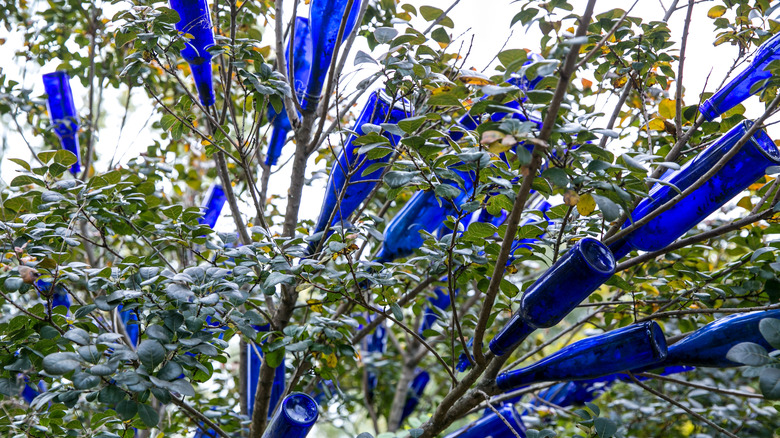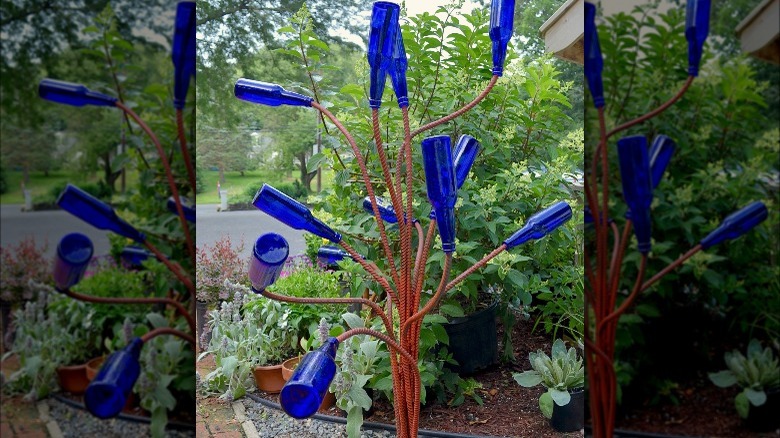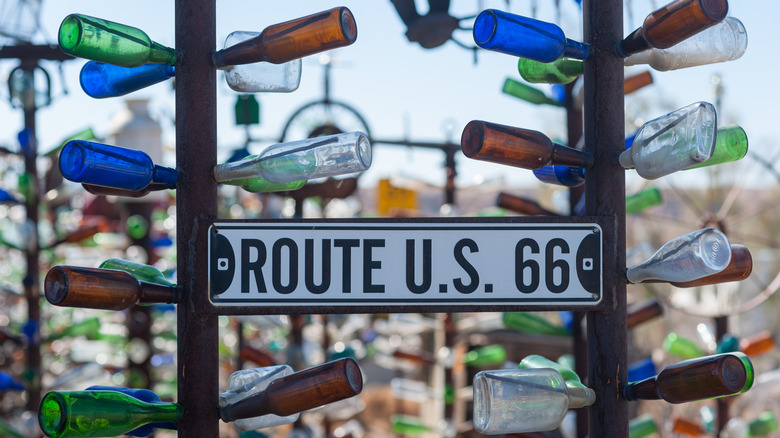The Southern Tradition That Has Its Origins In African Spirituality
While on a drive through the Southern U.S. you may spot trees dotted with colored bottles in a yard or garden. It's a common decoration called a "bottle tree" and people usually use blue glass bottles that once held beer or wine for the ornamentation. The unique folk décor is an eye-catching feature across many Southern states, including the Carolinas, Virginia, and Alabama. The tradition is no longer confined to the South, however, with bottle trees sprouting across the Midwest and Northern states as well. But the practice ultimately has deep roots in spiritual beliefs and cultural practices of African Americans in the South, per Wide Open Country.
Even centuries before 1776, the ritual and art of slipping vessels on branches was prevalent on West Africa's coast. It originated in the kingdom of Kongo, where we now have modern Angola, and once people from that region were enslaved and brought to the U.S., the creation of vessel-decorated trees continued, but utilizing the resources available to them on plantations, per Smithsonian Gardens. But to understand the art form's longevity, we need to sail back in time to West Africa to get a look at its significance.
Spirits in the bottles
The Kongo was a former group of polities that acted as a single, unified kingdom. The arrival of the Portuguese resulted in the Kongo people's gradual conversion to Christianity (per Britannica), but before then their religious practices were animistic, including the belief in sundry animal deities. Belief in ancestral spirits was also integral to their religion, with the god Nzambi being an important one of these deities even today. It's said that after a bout of sickness, Nzambi vomited the sun, the stars, animals and humans, then joined the ancestral spirits once the world was created (per Study Country).
But the people of the Kongo may have had negative spirits as well, and that's why some interpret the origin of the bottle tree in relation to these beings. According to Smithsonian Gardens, one view holds that the bottles trap the evil spirits at night and the sun destroys them by day. In a similar interpretation, the wayward spirits are impelled toward the bright bottles and become ensnared, only to be corked up and thrown into the river the next day (via Appalachian History). It's the bottles' potency in eliminating evil entities that makes them protectors of homes. Legend says you can even hear the restless spirits inside the bottles when a wind gust disturbs them (via Smithsonian Garden).
American bottle trees as Creole inventions
The 17th century slave trade resulted in the displacement of many Kongo people, but some were able to create bottle trees on plantations. According to Wide Open Country, the crepe myrtle was used for these projects, with glass bottles of any kind being used to create the spirit-fighting tree. Supposedly, the crepe myrtle is especially significant because it appears in the Old Testament, representing freedom for the enslaved Hebrews who escaped their plight.
Its purpose likely saw multiple incarnations over generations, since some say the Kongo tree of old also served as an altar to ancestral spirits (via Appalachian History). The bearers of good luck we see today are "likely" a Creole invention (per Smithsonian Gardens) — an evolved art form that's now widely practiced across the nation. The ways of constructing the trees have changed as well, with organic trees no longer being required. Some people use metal frames to hold up bottles or glass balls, and they may be crafted for art exhibits or public gardens (per Appalachian History).
It seems this humble piece of art has a history as deep as its vessels. So, the next time you see a bottle tree in a garden, listen closely, for you may be able to hear the rustle of the spirits of old.


